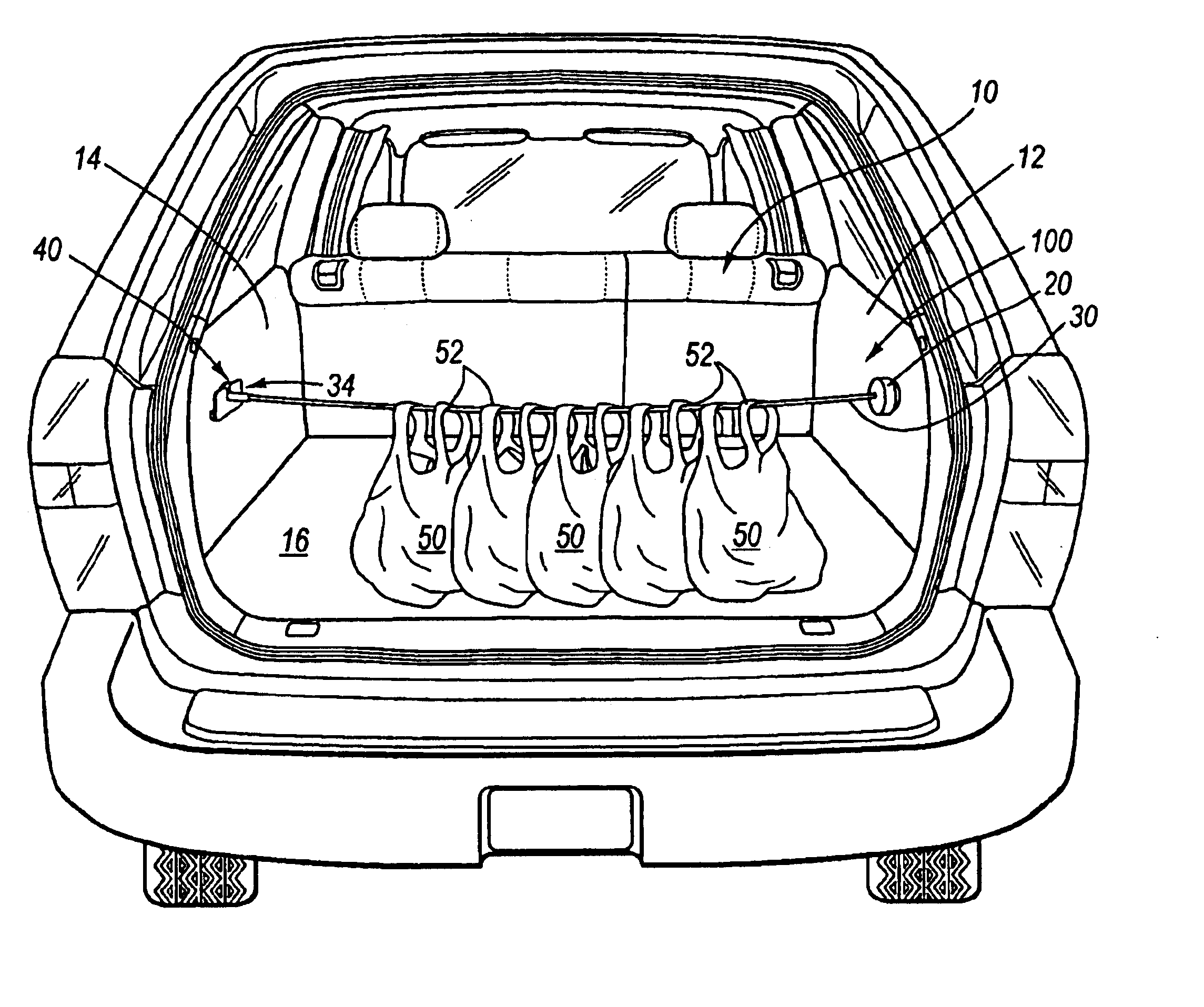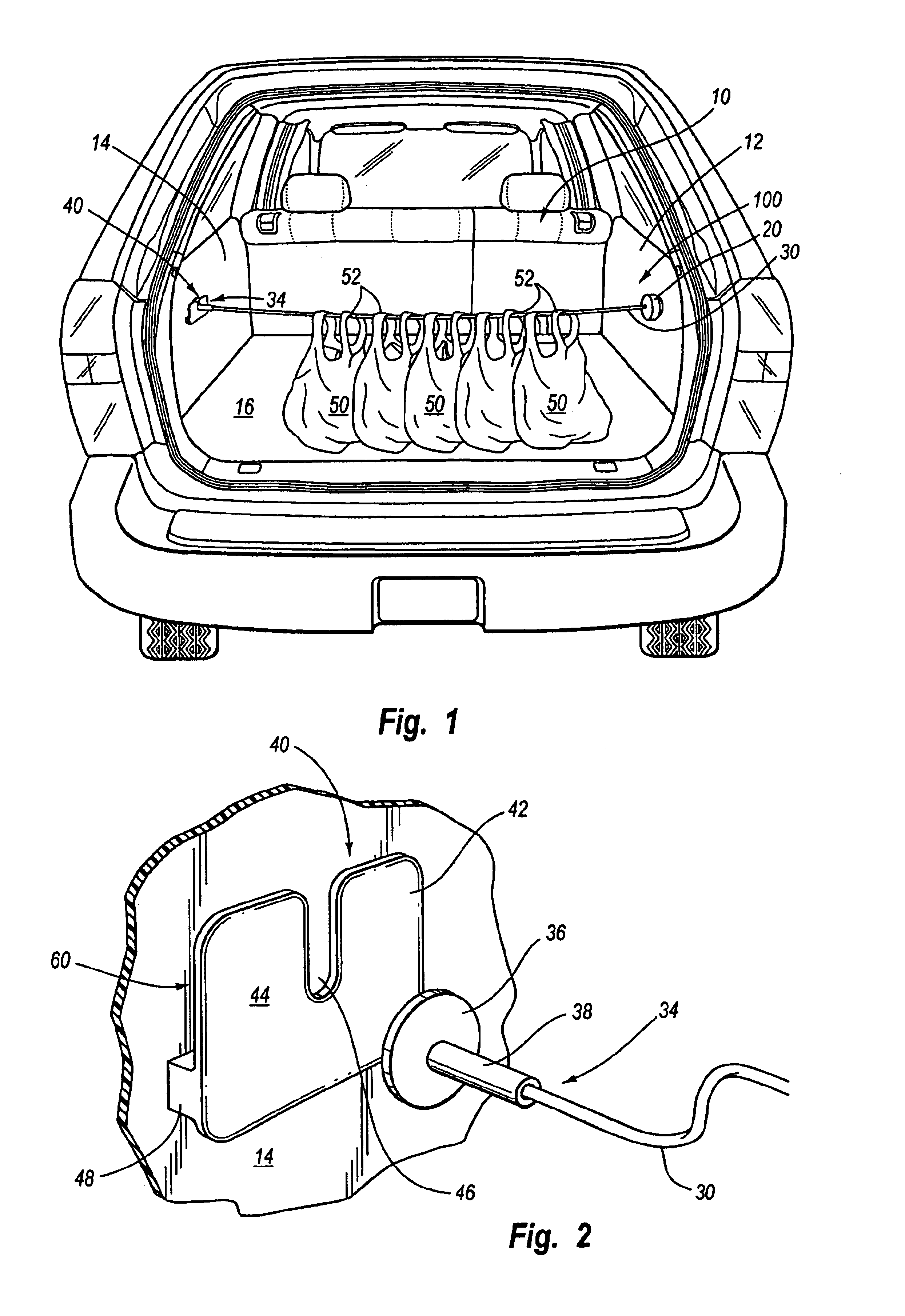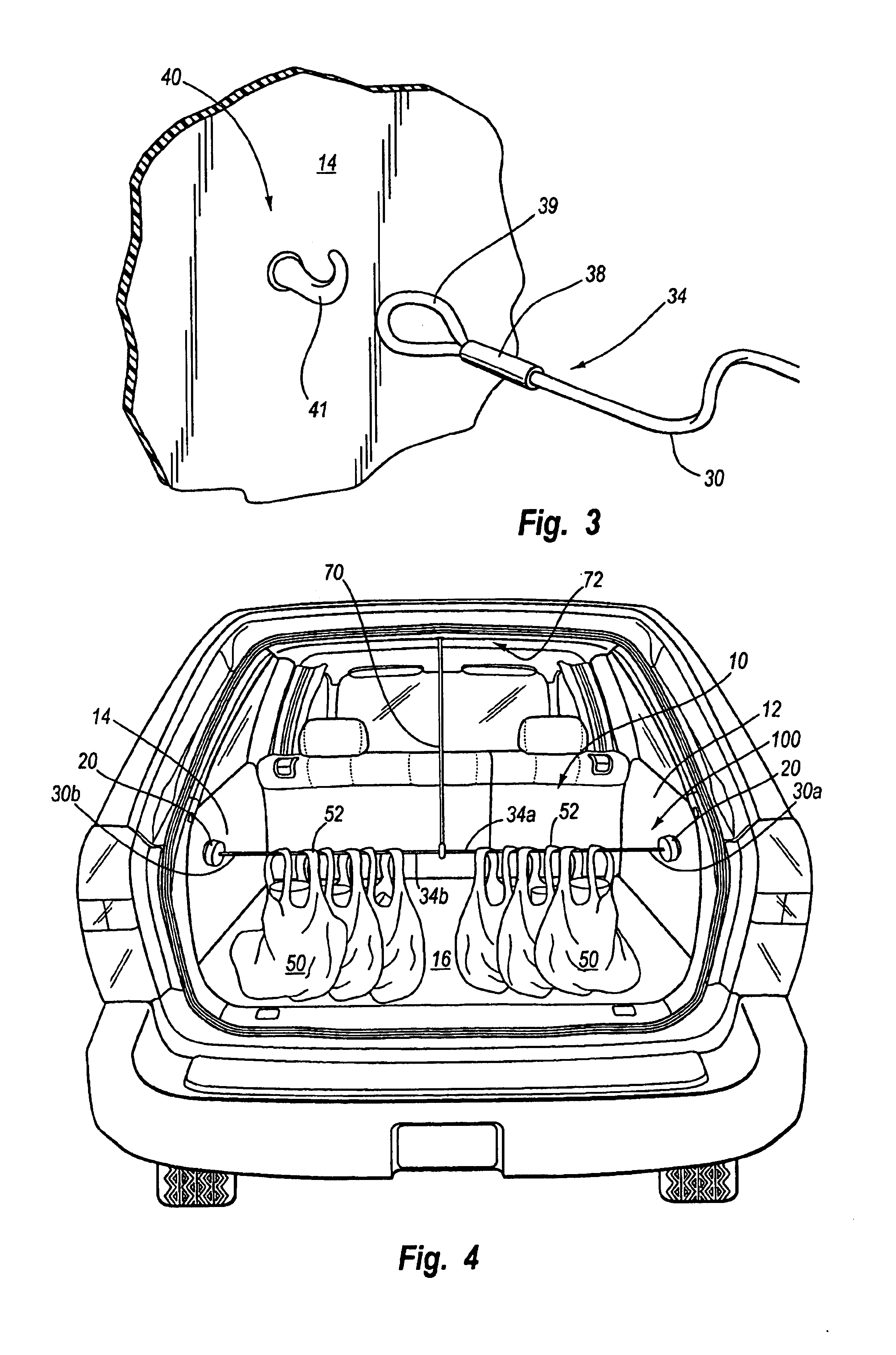During transport, e.g., in an automobile, anything contained in the automobile tends to be disturbed or jostled.
This disturbance to the stability (or jostling) of the automobile's contents becomes more apparent when the automobile travels over bumps or around turns.
Unfortunately, however, little attention has been paid to making the ride more stable for the inanimate contents of a vehicle, such as luggage or bags.
Some bags are prone to stability when transported.
Consequently, these traditional pieces of luggage, particularly when packed so as to have a relatively low center of gravity and well-distributed contents, are rarely jostled, and thus, its contents are disturbed to a relatively minor extent during transport.
For example, contemporary plastic grocery bags are prone to
instability.
Accordingly, plastic grocery bags provide very little support structure to its contents.
Consequently, regardless of the manner in which they are packed, unless its contents are inherently stable, plastic grocery bags are disturbed to a large extent during transport.
Even if by chance, the contents manage to remain largely in the plastic bags, the person will still have difficulty trying to find the handles of each bag so that they can be lifted out of the vehicle.
Typically, such problems are propounded with an increase in the number of plastic bags being transported.
There are several drawbacks, however, to grocery bag hooks.
First, it often is difficult to place a bag on a hook, as well as removing it from a hook.
This is due, in part, because the hooks are against a sidewall, which may serve as an obstacle, and because they are against a sidewall, one has to reach a certain distance into the vehicle to use the hook.
Second, it often is difficult to grasp the handles of a bag from a hook because the handles often are “stretched” (or rather elongated) because the hook is not flexible.
When the handles of a bag are stretched, or elongated, or twisted, the openings of the handles become difficult to discern, both with one's eyes and with one's hands.
Third, a relatively limited number of bags can be placed on each hook.
If the bags are roughly the same size, there only is a limited amount of “floor” space available for bags intended for a given hook because each bag's handles must be placed on the hook.
Fourth, if there are a large number of bags, many hooks will be needed.
In this regard, when more hooks are needed, the additional hooks become more difficult to reach.
Fifth, it is possible for a bag to become separated from a hook, as there is nothing to maintain the handles of a bag in place on a hook.
Consequently, loading bags on hooks and removing bags from hooks, as well as from the vehicle, is quite cumbersome and can be rather difficult.
There are several drawbacks, however, to cargo nets.
First, as opposed to the hooks that typically are permanently-fixed features of an automobile, nets need to be set-up and taken-down.
Otherwise, a net would use too much valuable cargo space when a net was not necessary, e.g., transporting pieces of furniture.
Accordingly, using a net takes time, and typically needs to be stowed for extended periods of time.
Second, the net is inherently cumbersome to use in that it is prone to tangling, i.e., unless it is always set-up in its ready-to-use mode.
Third, a net has limited flexibility and accordingly, has a somewhat
limited capacity.
Consequently, finding the handles of each
plastic bag often is not easily accomplished.
Thus, in light of these many disadvantages, a net designed to hold grocery bags, is underutilized.
There are several drawbacks, however, to containment areas.
First, containment areas provide limited stability to the bags or articles they are designed to stabilize.
Even if additional support features are provided, use of these features makes containment areas more difficult to use, i.e., by requiring several steps to stabilize an item.
Second, there is a limited amount of space provided to stabilize items in a containment area, and usually more limited in a hidden containment area.
This drawback is common to most areas specially designed to stabilize items.
Third, containment areas usually have very little flexibility, e.g., to accommodate items of varying and / or odd size and / or shape.
Fourth, containment areas are often difficult to use.
For example, as just described, items may not quite fit easily in a containment area.
Also, hidden containment areas may be more difficult to use than visible containment areas.
Thus, in light of their many disadvantages, containment areas are underutilized.
There are several drawbacks, however, to organizers for automobiles.
First, such organizers require a relatively large amount of space when in use and when not in use.
Most users do not welcome the idea of devoting a large amount of space in their automobile to such devices.
Second,
assembly, or set-up, of such organizers is not easy and requires time.
Third, when placing a bag in or taking a bag out of a compartment that is located too far into the interior of an automobile, it is difficult for one to reach such compartments.
Fourth, as stated above, any defined compartment provides limited flexibility for accommodating odd-sized items.
Thus, as with a net and a hidden compartment area, in light of its many disadvantages, organizers are left underutilized.
If the benefit is limited, then the user usually will forego the use of the device.
Even if the potential benefit is great, however, a user may forego using a device if such device requires too much effort and time to utilize.
Even if their hopes are met, however, a user will inevitably find a jumble of bags and groceries scattered in the location in which the bags were left.
 Login to View More
Login to View More  Login to View More
Login to View More 


